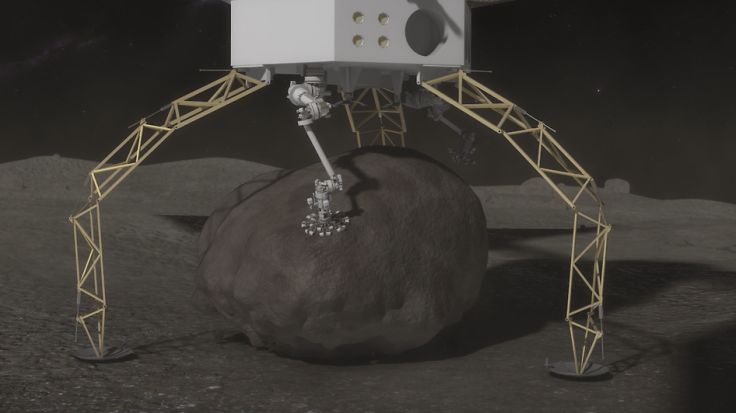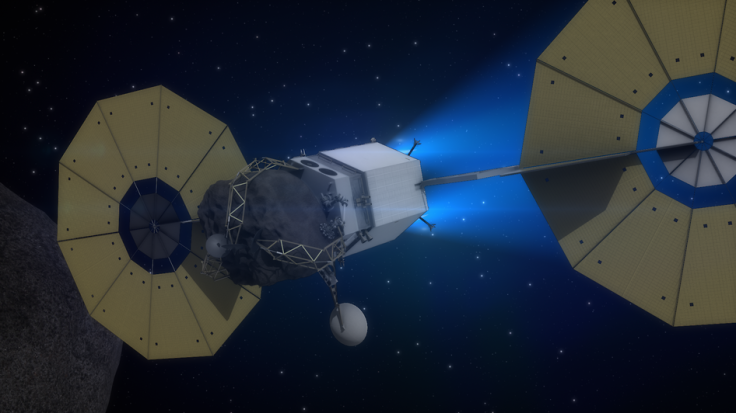Nasa details plan to catch asteroid boulder and put it in Moon orbit

Nasa has announced new details about its plan to catch an asteroid and place it into orbit around the Moon.
Plans for the Asteroid Redirect Mission (Arm) were announced in 2014, when William Gerstenmaier, an associate administrator at Nasa said: "We're going to grab a piece of the solar system, we're going to deflect it around the Moon and insert it into a distant retrograde orbit around the Moon where crews can visit."
Arm will be the first robotic mission to visit a large near-Earth object, collect a huge boulder, and then redirect it into a stable orbit around the Moon.
Astronauts will then explore it and return to Earth with samples in the 2020s. The mission is part of Nasa's plan to advance technologies and spaceflight required for a manned mission to Mars in the 2030s.
Discussing the latest announcements, Nasa's associate administrator Robert Lighfoot said: "The Asteroid Redirect Mission will provide an initial demonstration of several spaceflight capabilities we will need to send astronauts deeper into space, and eventually, to Mars. The option to retrieve a boulder from an asteroid will have a direct impact on planning for future human missions to deep space and begin a new era of spaceflight."
Nasa said it has no plans to announce which asteroid will be targeted for the mission for another four years – a year before the robotic spacecraft is due to launch.

The agency also said scientists will have to determine its characteristics before an asteroid is considered a valid candidate – they will look at its size, rotation, shape and orbit. Three candidates are currently in the running - Itokawa, Bennu and 2008 EV5.
After rendezvousing with the target, the spacecraft will deploy robotic arms to capture a boulder – after which it will begin the lengthy task of placing it in the Moon's orbit. It will take about six years for Arm to move the asteroid into lunar orbit.
However, before it does this, Nasa plans to take the opportunity to test its planetary defence techniques to prevent asteroid impact threats in the future: "The experience and knowledge acquired through this operation will help NASA develop options to move an asteroid off an Earth-impacting course, if and when that becomes necessary," a statement said.
"The ARM robotic spacecraft opens a new and second option for planetary defence using a technique called a gravity tractor. All mass exerts and experiences gravity and, in space, the gravitational attraction even between masses of modest size can significantly affect their motion.
"This means that by rendezvousing with the asteroid and holding a halo orbit in the appropriate direction, the ARM robotic spacecraft can slowly pull the asteroid without touching it."
The first space crews are expected to visit the asteroid in the mid-2020s.
© Copyright IBTimes 2025. All rights reserved.






















